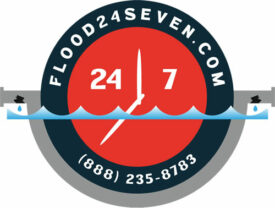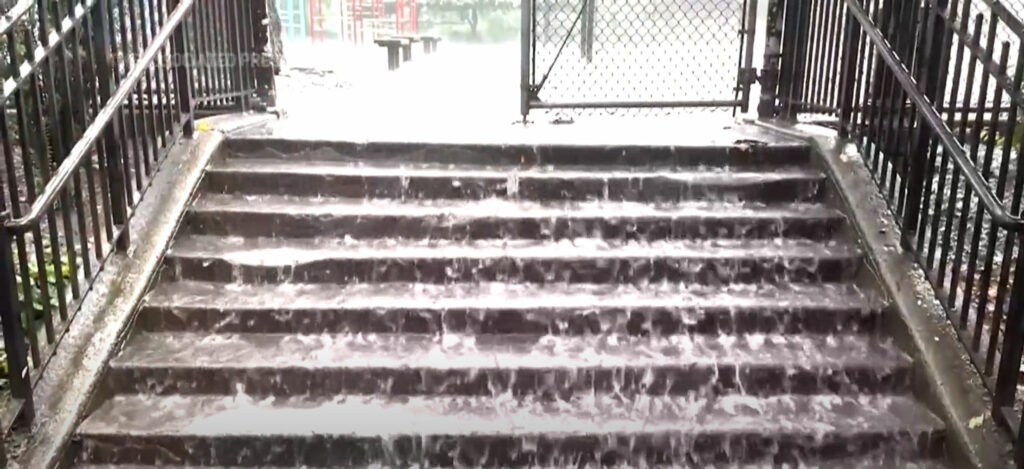As the rain begins to slow and floodwaters start to recede, there is still frustration among New Yorkers, many who were dealing with flooded basements and damaged property as a result of flooding and sewage backup. Storm drains simply could not keep up with the pounding torrential rain that continued for days, as New York City is hit by flash floods and a state of emergency is declared.

While there was still a coast flood advisory in place, many NYC residents were assessing the damage. The National Weather Service indicates there was up to one and a half feet of inundation above ground level expected in vulnerable areas near the waterfront and shoreline.
If you have been affected by flooding, call Flood24Seven 888-235-8783. It is essential to act quickly to remediate flooding and to prevent further damage your property.
As Flash Flood warnings, coastal flood advisories, and travel advisories were issued, many residents were already feeling the frustration of the downpours affecting everyday life. New York residents reacted in disbelief as record-breaking rainfall floods streets, cars, subways, and apartments. Some said looking outside seemed like they were looking at a lake.
The National Weather Service has provided an explanation for the heavy downpours in such a short time. The reason for so much rain is due to remnants of Tropical Storm Ophelia over the Atlantic Ocean. The storm combined with a weather system coming from the west, all when conditions offshore are particularly primed for storms. And as tropical storms sometimes do, this combination storm stalled over New York for 12 hours.
As certain areas of Long Island – such as Long Beach, Merrick, Massapequa, Oceanside, Lindenhurst, Amityville, Copiague, Wantagh, Seaford, Babylon – are prone to flooding, Flood 24/7 has comprehensive restoration services for residential and commercial properties.
Returning to a flooded home can be overwhelming and dangerous, so it’s important to take precautionary steps to ensure your safety. Turn off the electricity at the main breaker or fuse box, even if the power is off in your community. That way, you can decide when your home is dry enough to turn it back on.
Here is additional guidance if your residence or business has been flooded:
- Wait for clearance: Do not enter until local authorities have declared it safe to do so. They will assess the structural integrity and potential hazards before allowing residents and businesses to return.
- Dress appropriately: Be sure to wear protective clothing, including rubber boots, gloves, and a mask to protect yourself from contaminants that could be present in floodwater.
- Damage Documentation: Take photos or videos of flood-damaged areas for your insurance. This documentation will help with your insurance claim.
- Assess the damage: Evaluate the extent of the damage caused by the flood. Be cautious of sagging ceilings or walls. They could collapse.
- Remove stagnant water: Sstart removing remaining water with a pump, wet/dry vacuum, or by calling professional water removal services. Open windows and doors to allow airflow and expedite drying.
- Clean and disinfect: Use a bleach solution (1 cup bleach to 5 gallons of water) or other disinfectants to thoroughly clean and disinfect all surfaces that came into contact with floodwater
- Dispose of contaminated items: Throw out any items that can’t be cleaned or disinfected. This may include mattresses, carpets, upholstered furniture, and food items. Be sure to document any items that you have to throw away.
- Dry out your home: It’s crucial to remove all moisture to prevent mold growth. Use a dehumidifier, some fans, and open your windows to dry out the affected areas.
- Get help: If the damage is extensive or you’re unsure about any aspect of the cleanup process, it’s advisable to seek our professional assistance with residential or commercial remediation services.
Safety should be your top priority when returning to a flooded home. Take your time, follow these steps, and consider seeking guidance from local authorities or professionals to ensure a safe recovery.
Remember: If you have been affected by flooding, call Flood24Seven 888-235-8783. It is essential to act quickly and prevent further damage your property.

